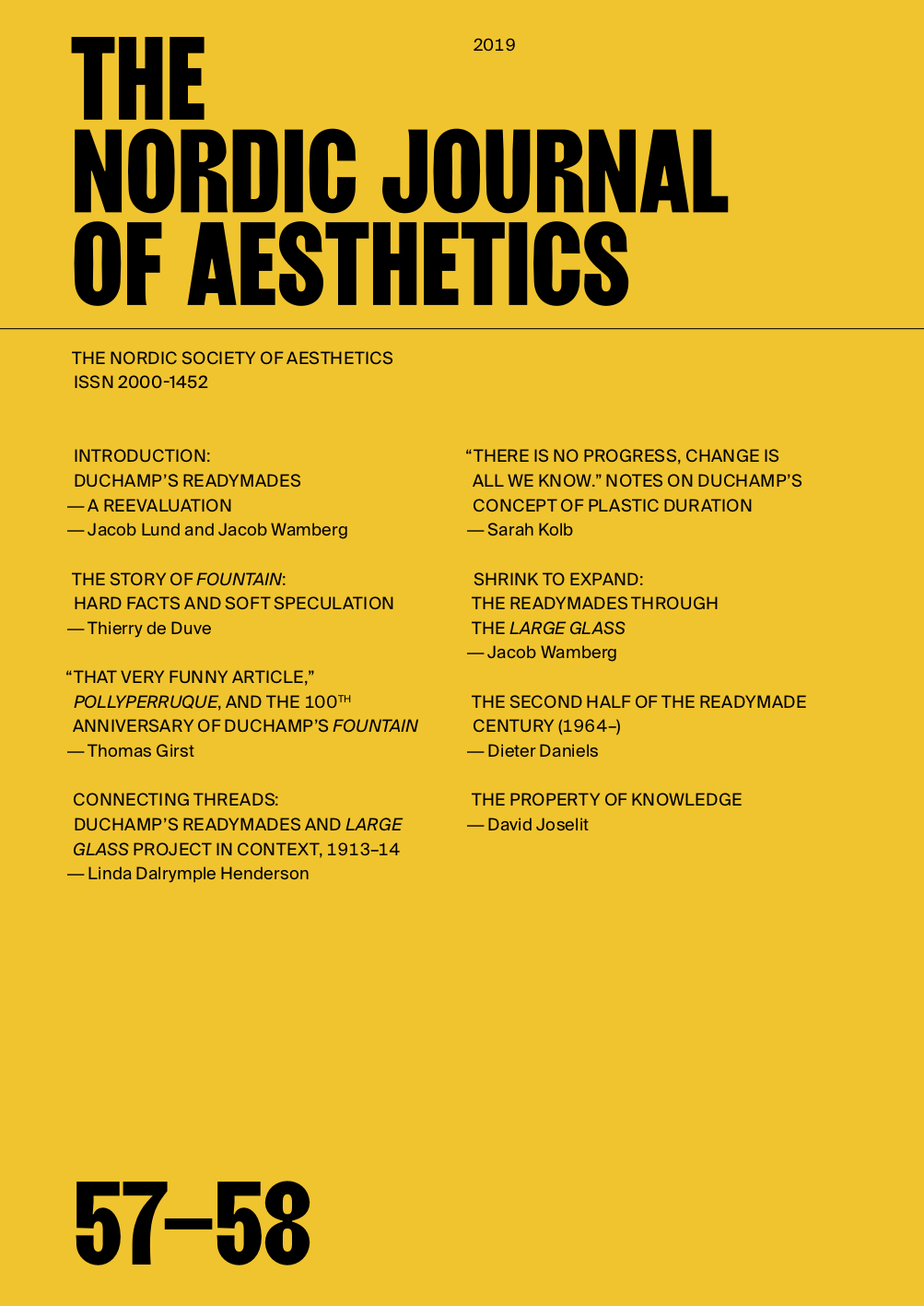CONNECTING THREADS: DUCHAMP’S READYMADES AND LARGE GLASS PROJECT IN CONTEXT, 1913—14
DOI:
https://doi.org/10.7146/nja.v28i57-58.114850Keywords:
Duchamp, Readymades, Large Glass, Science, Ether physics, Herne Bay, Electrical lightingAbstract
In 1963 Duchamp described his vertical installation of three Readymades at the Pasadena Art Museum as “readymade talk of what goes on in the Large Glass.” Elsewhere, he spoke of the Readymades as “vehicles for unloading ideas,” and during the years 1912-15 his mind was filled with ideas as he invented the “playful physics” for his techno-scientific allegory of quest, The Bride Stripped Bare by Her Bachelors, Even [The Large Glass] (1915-23). This essay argues that the “ideas” being unloaded in the Readymades were rooted in his extensive study of contemporary science and technology as well as the biographical experience of his stay at Herne Bay on the English seacoast during August 1913. Readymades addressed include the Bicycle Wheel, With Hidden Noise, Paris Air, and Fresh Widow. Central themes include string or thread, traced from his preoccupation with tennis during his holiday, and the impact of the electrical spectacle of the illuminated Pier Pavilion at Herne Bay.
Downloads
Published
How to Cite
Issue
Section
License
Authors who publish with this journal agree to the following terms:
- Authors retain copyright and grant the journal right of first publication with the work simultaneously licensed under a Creative Commons Attribution License that allows others to share the work with an acknowledgement of the work's authorship and initial publication in this journal.
- Authors are able to enter into separate, additional contractual arrangements for the non-exclusive distribution of the journal's published version of the work (e.g., post it to an institutional repository or publish it in a book), with an acknowledgement of its initial publication in this journal.
- Authors are permitted and encouraged to post their work online (e.g., in institutional repositories or on their website) prior to and during the submission process, as it can lead to productive exchanges, as well as earlier and greater citation of published work (See The Effect of Open Access).




